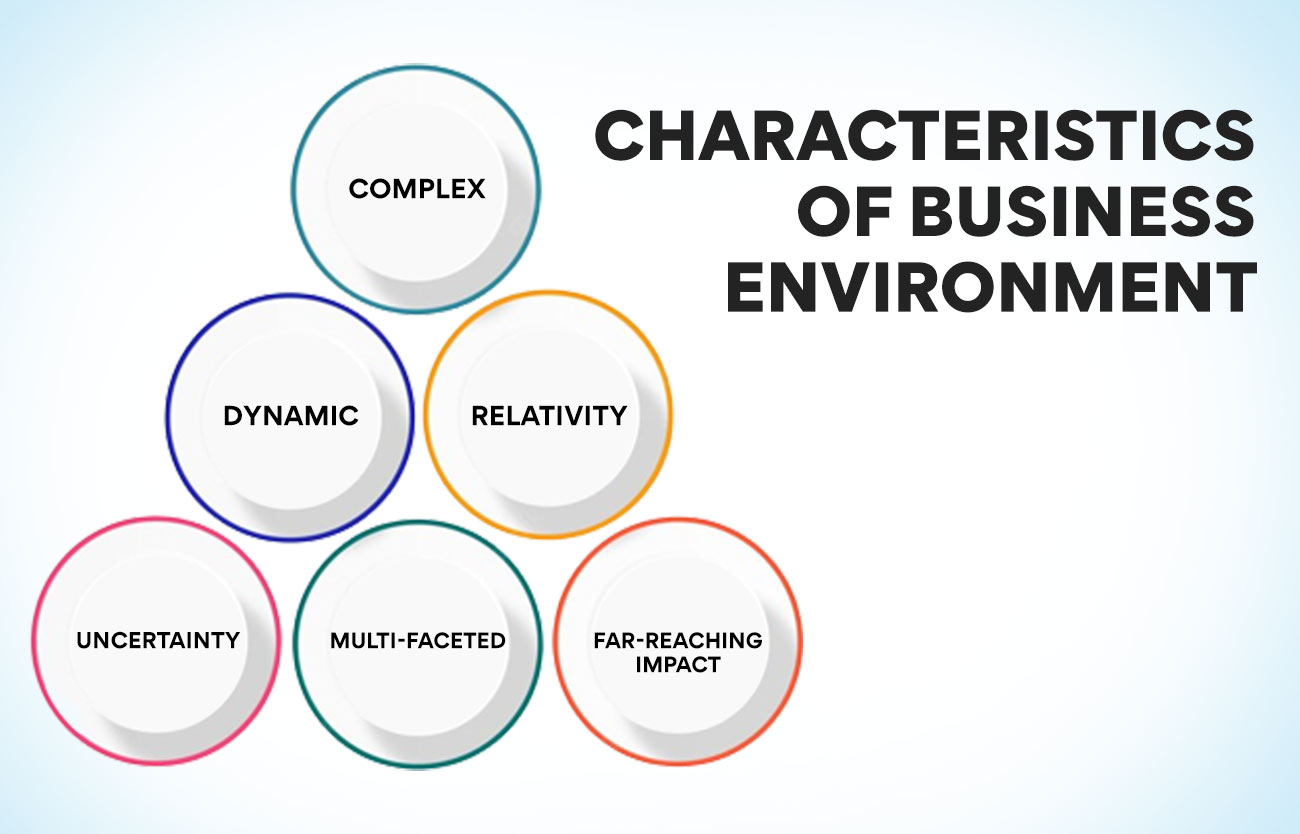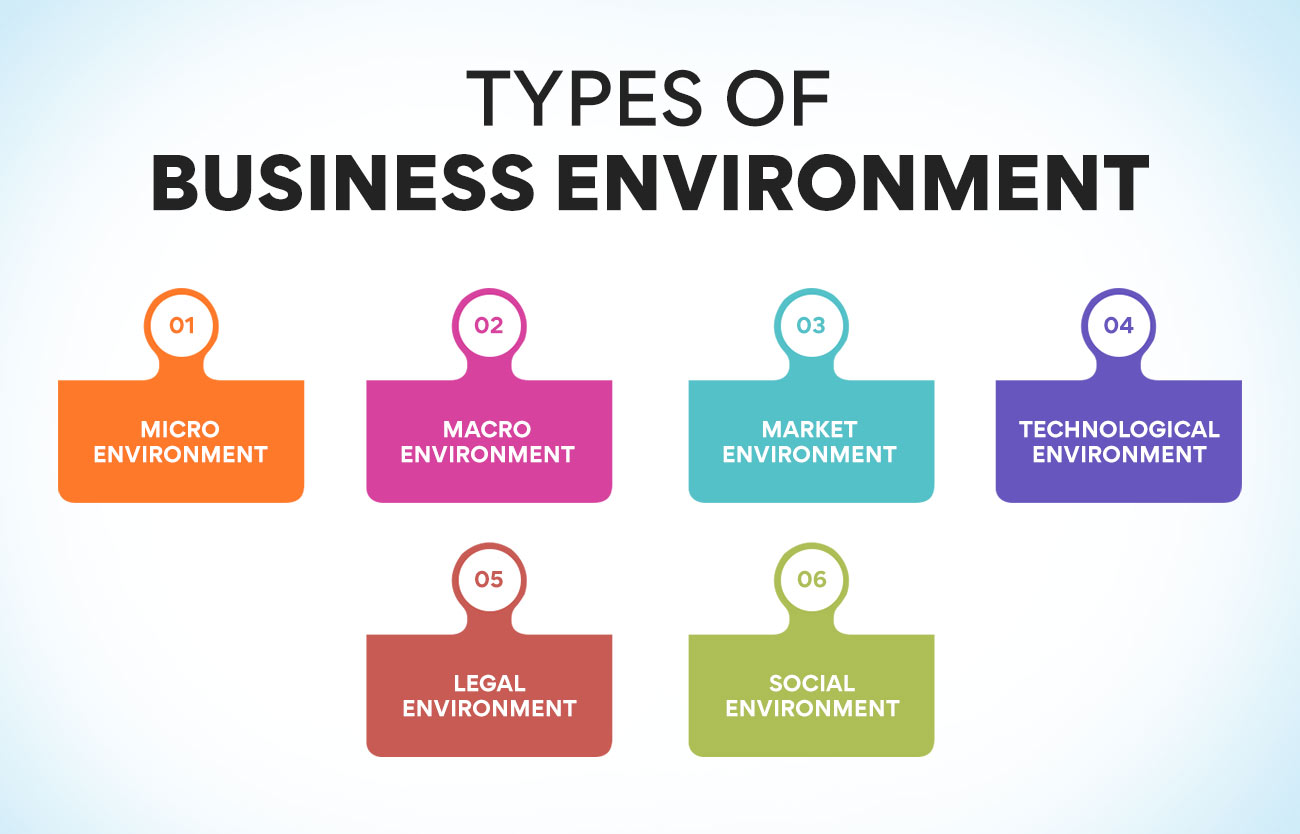Every business is affected by the environment in which it operates. The business environment includes all external factors impacting a business, including customers, suppliers, government regulations, and economic conditions. Business Environment refers to the various external micro and macro factors that can potentially impact the success or downfall of any business venture. These factors range from local economic conditions to global political trends.
All businesses must consider their environment to make sound decisions about their strategies, operations and financial performance. By understanding the interaction between different components of the environment, companies can better anticipate how those components will influence their bottom line to remain competitive and profitable. This article provides a comprehensive overview of what constitutes a business environment and some key considerations for businesses when determining how best to manage it.
What is the Business Environment’s significance in the success of a company?
The business environment is a complex and constantly changing network of factors that can impact a company’s success. These factors include economic conditions, government regulations, competition, and global events. While it can be challenging to anticipate and plan for all possible changes in the business environment, understanding the types and features of the business environment can help companies make more informed decisions and better adapt to change.
Each type of business environment has different features that can impact a company’s success. For example, macroeconomic conditions such as inflation or recession can significantly affect demand for a company’s products or services. Government regulations can create barriers to entry into a market or mandate certain costs incurred by businesses operating in that jurisdiction. Competition from other companies can erode market share or drive down prices. And finally, global events such as wars or natural disasters can disrupt supply chain or create new opportunities in foreign markets.
While it is impossible to control or predict the business environment completely, understanding its features and impacts can help a company gain an advantage over its competitors. By anticipating changes in the business environment and adapting quickly, companies can take advantage of new opportunities or mitigate risks. In this way, a thorough understanding of the business environment is essential for any company looking to succeed in today’s rapidly changing marketplace.
Characteristics of Business Environment
Complex
The business environment is a complex system of many elements that interact to shape the conditions in which businesses operate. This complexity is further complicated because each environment element interacts with the other, creating a web of interconnected components.
These interconnections include economic factors such as consumer demand and government regulations, political influences from lobbying groups and international organisations, and social trends like shifting cultural values and technological advances. Understanding how each element affects the others is essential for any company looking to succeed in this ever-evolving landscape.
Dynamic
The business environment is constantly changing and can be affected by internal and external factors. Businesses must be able to adapt to these changes to survive and thrive. Dynamic is a key characteristic of the business environment. It is defined as constantly changing, seen in many aspects of the business world. This includes changes in technology, customer demands, competition levels, government regulations and economic conditions.
Companies must keep up with these developments to remain competitive and profitable. By staying ahead of the curve, they can take advantage of new opportunities and ensure their products or services are still relevant to their target market. Dynamic can also refer to employees’ abilities; businesses must ensure they have staff who can quickly adapt to change if required. They should also be open-minded about fresh ideas from other departments or external sources for potential solutions or innovations that could benefit the company.
Relativity
Relativity is an essential characteristic of the business environment, as it allows businesses to adapt and respond quickly to changing circumstances. Companies must be constantly vigilant and aware of changes in their industry, markets, customers, suppliers and partners. Businesses can use relativity to better understand their competitors’ actions to stay ahead of the competition. Relativity also helps companies identify opportunities for growth or improvement and remain competitive in a rapidly evolving landscape. Businesses can make proactive decisions to help them achieve long-term success by predicting trends before they happen.
Uncertainty
Uncertainty is an inherent characteristic of the business environment. It can take many forms, such as changes in consumer demand, technological advancements, geopolitical shifts, etc. Uncertainty can be seen in all aspects of a company’s operations, from production to marketing to finance. Companies must remain agile and responsive to these changes to succeed in this uncertain environment. To do so, organisations need strategies for managing uncertainty that involves monitoring the external environment for changes and making proactive decisions based on sound data analysis. With careful planning and preparation, organisations can survive and thrive during times of uncertainty by taking advantage of new opportunities that arise from unexpected circumstances.
Multi-Faceted
The business environment is a multi-faceted and complex system. It consists of economic, political, social, technological and environmental factors that influence the success of businesses on both local and global scales. A company must be flexible enough to respond quickly when changes occur in any one of these aspects. To remain competitive over time, organisations must adjust their strategies to suit changing customer preferences and other market conditions like inflation or recession.
Moreover, companies must also adhere to government regulations related to labour law or taxation policies while still staying profitable for them to succeed long term. Overall, being multi-faceted is an essential characteristic of today’s business environment which can help businesses thrive regardless of their circumstances.
Far-Reaching Impact
The business environment is constantly changing and evolving, making it ideal for businesses to keep up with the times. One of the essential characteristics of a thriving business environment is its far-reaching impact. This means that businesses must think beyond their immediate circumstances and consider how their decisions will affect all stakeholders involved in the company’s operations, from customers and suppliers to employees and shareholders. To ensure longevity, companies must be able to anticipate future trends and develop plans accordingly.
Additionally, they should be prepared for unexpected changes by having contingency plans to quickly shift gears when necessary while maintaining efficiency throughout their organisation. By developing a wide-reach strategy, businesses can remain competitive despite industry volatility while simultaneously creating positive outcomes for all involved parties.
Importance of Business Environment
Identifying Opportunities and First Mover Advantage
Identifying opportunities and first mover advantage as a benefit of the business environment is important to consider when starting or managing a business. It is essential in today’s competitive market, as businesses that can quickly identify and capitalise on new opportunities can gain significant advantages over their competitors.
Recognising trends, anticipating future changes and taking action before anyone else can give businesses a huge strategic advantage. Being the “first mover” in any given field gives companies the potential to establish themselves as industry leaders, allowing them to gain valuable market share early on. Furthermore, by identifying an opportunity before others do, businesses may be able to acquire resources such as patents or exclusive contracts more easily than if they had entered later into the space. This can help increase profits while helping reduce costs associated with production and marketing efforts due to the already existing infrastructure around said opportunity.
For business owners to effectively utilise this type of strategy, they must have clear objectives and understand how markets operate within their particular industry sector.
They should also pay attention to both macro-level (e.g., current economic climate) and micro-level (e.g., customer preferences) trends in order better assess potential opportunities in advance of other players entering into the same markets/fields – thus achieving first mover status when it comes time for implementation & capitalisation upon said opportunity!
It is also beneficial for entrepreneurs and small business owners alike not only look outwardly at what external sources are saying about emerging industries but also internally at what skills/expertise they have available within their own organisation that could potentially provide them with unique insights into addressing these new challenges posed by changing environments; thereby giving them yet another way towards achieving first mover status against their competition!
Finally, having good relationships with key stakeholders (customers/clients, suppliers etc.) will allow one company access information ahead of its competitors regarding upcoming changes, which could mean even greater success if acted upon accordingly, allowing them further chances at gaining additional competitive advantages through being proactive instead reactive – all thanks very much due credit goes back again towards recognising those earliest opportunity signals being presented up front!
Utilising Useful Resources
The business environment is an important factor in utilising valuable resources, as it affects the way businesses interact with their stakeholders and the society in which they operate. Businesses must consider the external elements that can affect their operations, such as competition from other companies in their industry, changes in regulations or macroeconomics policies, technological advances or natural disasters. Therefore, a company must strategically manage its business environment if it wishes to use its resources and remain competitive.
The primary benefit of managing one’s business environment is that it allows businesses to identify potential opportunities for growth and development before competitors do so. For example, by tracking economic trends within a particular market segment or geographic region, businesses can develop innovative strategies to exploit any forthcoming changes that may result in increased profits through more cost-effective measures and better customer service. In addition, monitoring external factors such as technological developments will enable a business to stay ahead of competitors by investing early in emerging technologies while still offering competitive prices.
Furthermore, good management of one’s business environment enables companies to anticipate threats before they arise and act accordingly to minimise associated risks; this eliminates costly surprises down the line, which could otherwise put them out of operation completely due to unexpected costs incurred due to unforeseen events. Thus, being aware of any possible threat can help firms optimally utilise existing resources instead of wasting them on unnecessary purchases that may not even be needed once all facts are established regarding future situations beyond anyone’s control.
Also read: What is Stakeholder Engagement? Importance, Planning and Implementation
Types of Business Environment
Micro Environment
The microenvironment of a business refers to the internal factors that have an impact on its day-to-day operations. These include the company’s employees, customers, suppliers, and shareholders.
The microenvironment is important because it can directly impact a company’s bottom line. For instance, if a company’s employees are unhappy, they may be less productive and more likely to leave, leading to higher turnover costs. Similarly, if a company’s customers are dissatisfied, they may take their business elsewhere.
There are several ways to improve the microenvironment of a business. One is to invest in employee training and development so that employees feel valued and motivated to do their best work. Another is to focus on customer service and satisfaction so that customers feel appreciated and loyal to the brand.
Macro Environment
The macro environment is the external factor that affects a business. The three most essential elements in the macro environment are economic, social, and technological.
Economic factors include inflation, interest rates, and unemployment. Social factors include demographics, lifestyles, and culture. Technological factors include research and development, technology transfer, and commercialisation.
A business must be aware of all three types of macro environment factors in order to be successful. All businesses are affected by the economy, but some businesses are more sensitive to economic fluctuations than others. For example, a luxury goods company will be more influenced by an economic downturn than a utility company.
Social trends can have a significant impact on business. For example, the population’s ageing will impact businesses catering to young people, such as toy stores or apparel companies. Changes in lifestyle trends can also affect businesses; for example, the growing popularity of health and fitness will impact businesses that sell unhealthy products.
Technological advancements can impact a business in both positive and negative ways. On the one hand, new technologies can create new opportunities for businesses; on the other hand, they can also make existing products or services obsolete. For example, the advent of streaming video services has had a negative impact on traditional television broadcasters.
Market Environment
The market environment can be classified into four types:
- Competitive environment
- Regulated environment
- Turbulent environment
- Supportive environment
Competitive Environment:
A competitive business environment is one in which businesses compete for customers and market share. The key features of a competitive environment are as follows:
- Many similar businesses are offering similar products or services.
- Businesses try to distinguish themselves from their competitors through price, quality, customer service, etc.
- Competition is often intense, and businesses must continually strive to stay ahead of their competitors.
Regulated Environment:
A regulated business environment is one in which businesses are subject to government regulation. The key features of a regulated environment are as follows:
- Government regulations can impact business operations in many areas, such as labour laws, environmental regulations, etc.
- Businesses must comply with all applicable regulations or face possible penalties.
- Regulations can create barriers to entry for new businesses, as they must comply with all applicable regulations before starting operations.
Technological Environment
The technological environment of a business is the set of technologies that the business uses to operate. It can include things like computers and software but extends to production equipment, vehicles, and communication systems. The technology a business uses can significantly impact its efficiency and competitiveness.
One of the most significant fundamentals of the technological environment is information technology (IT). It encompasses all the technologies businesses use to store, process, and communicate information. It includes everything from basic office computers and software to more complex systems like CRM and ERP.
Businesses must carefully consider their IT needs when deciding what technology to adopt. They also need to consider how new technologies will fit into their existing systems and whether they can integrate them seamlessly. They must ensure they have the proper IT infrastructure to support their business operations.
Another important consideration for businesses is the ever-changing landscape of technology. New technologies are constantly being developed, and older ones are becoming obsolete. Businesses must stay abreast of these changes and adopt new technologies when it makes sense for their operations. They also need to be prepared for when older technologies become defunct and plan for how they will transition to new ones.
Legal Environment
There are four different types of business environments: perfect competition, monopolistic competition, oligopoly, and monopoly.
The legal environment of a business is the set of laws and regulations that control the relationship between the company and society. The type of business environment influences the legal environment. For example, businesses operating in a monopoly have greater freedom to set prices and terms of sale than businesses operating in a competitive market.
The legal environment also includes the contract law that governs the relationships between businesses and their customers, suppliers, employees, and other stakeholders. This body of law sets out the rights and obligations of each party in a contract. Contract law is vital for businesses because it provides certainty and predictability in commercial relationships.
Businesses must also comply with environmental laws, which differ depending on the type of business and its location. For example, businesses that emit pollutants into the air or water must obtain permits from environmental regulators. Businesses that violate environmental laws can be subject to hefty fines or even shutdowns.
Employment law is another area of the legal environment that businesses must navigate. Employment law sets out the obligations of employers and employees regarding issues such as wages, hours worked, working conditions, and termination of employment.
Also read: Why Do Businesses Need An Operations Strategy?
Social Environment
Businesses, both large and small, operate within a complex social environment that has the potential to affect their operations profoundly. This social environment includes all of the laws, customs, beliefs and attitudes that exist in a given society or economy. The degree to which businesses are affected by this environment can depend on their size and industry sector.
At its most basic level, the social environment of business involves the legal system. Laws such as those governing taxes, contracts and labour relations are essential considerations for any business operating within an economy. In addition to these laws, public policy is also to consider – including policies relating to competition law and regulation (e.g., antitrust) or environmental protection (such as pollution control). Business owners need to be aware of relevant legislation when making decisions about how they manage their company’s resources or operations to not only comply with regulations but also protect themselves from potential liability risks should something go wrong with their operations down the line.
Conclusion
The business environment is ever-changing and highly dynamic. Firms need to stay current on the latest trends and developments in the business environment in order to remain competitive. Understanding the different elements of a business environment, such as economic, legal, technological, political and social, can help firms anticipate potential changes or opportunities that may arise. By being aware of external factors, businesses will be better equipped to make sound decisions regarding their operations. Lastly, it’s also essential for businesses to invest time and resources into developing strategies that support them in adapting quickly when conditions change. In conclusion, knowing the various components that make up a business environment helps organisations create viable plans that enable them to capitalise on opportunities and respond effectively when faced with challenges.
Our Executive Development Programme in General Management is designed to help executives become better leaders and managers. Through this programme, participants will understand the business environment, its various elements, and how they impact their organisation. The curriculum covers topics such as global trends, market dynamics, competitive analysis and strategy formulation. Participants will also develop skills in financial management, decision making and organisational change. This programme provides an excellent opportunity for those looking to sharpen their knowledge of business operations and leadership practices that are essential for any successful organisation.
More Information:
Using Digital Business Management For Better Profitability
What are the Types of Business Environment?
What is an HR Business Partner: The Ultimate Guide
What is Digital Financial Services? Explained






_1672046204.jpg)
_1672046778.jpg)

























